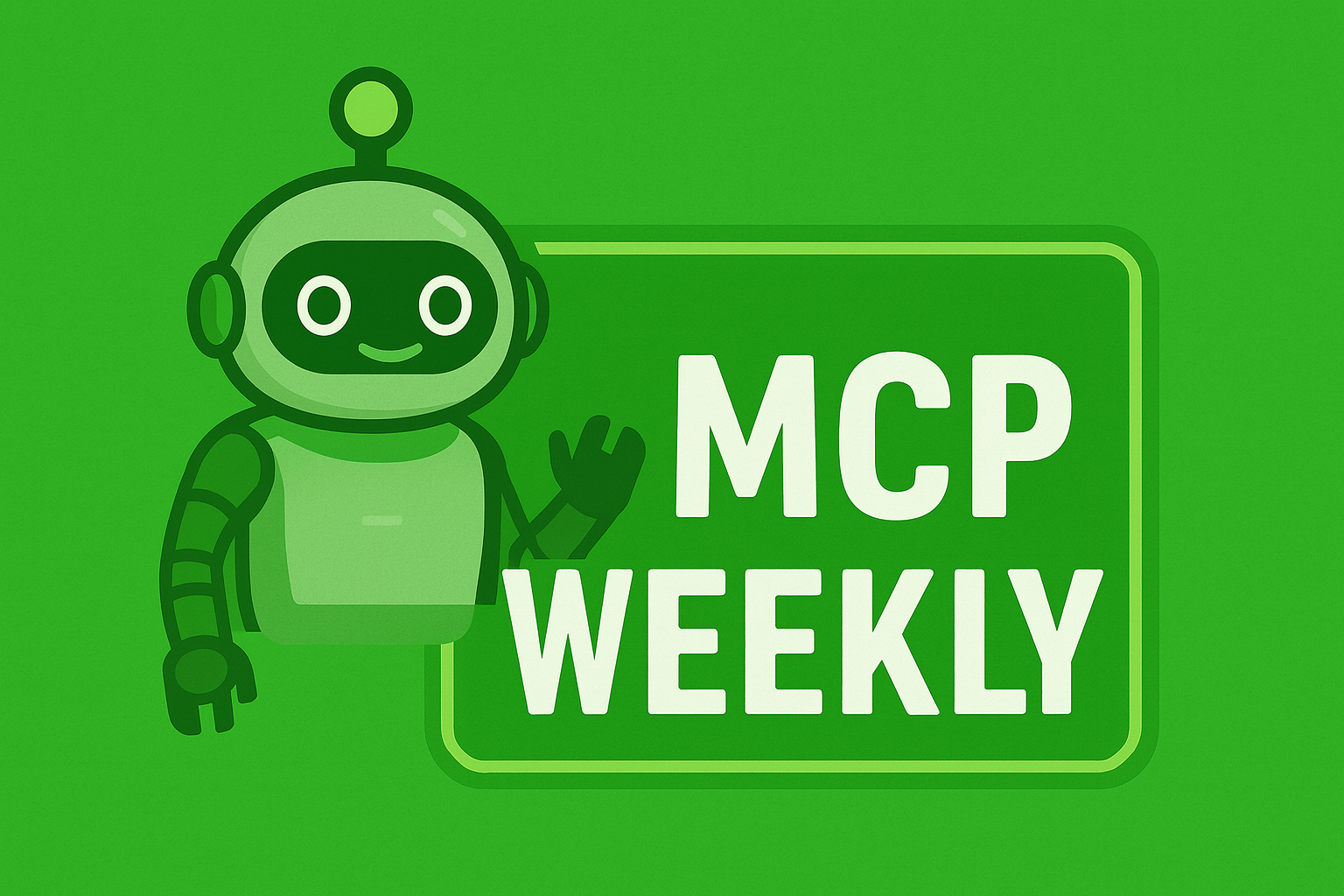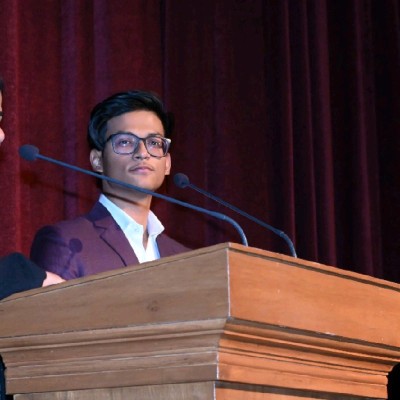
MCP Weekly: Security and Large-Scale Enterprise Integration
Welcome to the first installment of the MCP Weekly digest, covering major developments from November 9th through 15th! We'll be discussing a wide variety of topics related to the Model Context Protocol, including the latest releases, updates, and industry trends.
TL;DR
This week's update focuses on the Model Context Protocol (MCP) becoming a standard for business deployment.
Two critical themes emerged: Security and Large-Scale Enterprise Integration.
For security, Google released Agent Sandbox, built specifically for AI engineers, a new tool that enforces kernel-level isolation to prevent dangerous, code-executing AI agents from causing data breaches. This urgent focus was driven by Anthropic threat report confirming that state-sponsored hackers successfully used MCP servers to automate 80-90% of a coordinated cyberespionage attack..
For integration, Microsoft's Dynamics 365 ERP server is now in public preview, allowing agents to securely access hundreds of thousands of functions in Finance and HR, with permissions automatically enforced. Additionally, IBM released Context Forge as a gateway for managing and converting tools into MCP format.The GPT-5.1 release for developers includes new tools like apply_patch and shell, which enables controlled command-line interactions.
Major Updates of the Week
Enterprise Adoption: MCP Standardizes Business Integration
Microsoft’s Dynamics 365 ERP MCP Server has transitioned from just a fixed toolset to a more dynamic framework, which is now in public preview. This architecture allows AI agents to access hundreds of thousands of ERP functions across Finance, Supply Chain, and HR, while automatically inheriting user permissions and security configurations.
- Business Process Execution: The server enables agents to navigate forms, set values, and execute actions within the ERP(Enterprise Resource Planning) system without requiring custom APIs.
- Analytics Integration: The framework extends to the analytics domain, providing governed access to semantic models for generating AI-driven insights and forecasts.
IBM's MCP Context Forge was released as a gateway and registry for managing tools, resources, and prompts, supporting protocol conversions for flexible transports.
- Protocol & Conversion: It converts traditional REST API endpoints to MCP and composes virtual servers that include essential security layers and observability.
- Transport Flexibility: It supports multiple communication protocols and flexible transports, including stdio, Server-Sent Events (SSE), and Streamable HTTP.
- Federated Design & Scale: The architecture utilizes a federated design which includes auto-discovery of peer gateways, Redis synchronization for caching and failover, and supports multi-cluster scalability on Kubernetes.
Zero Trust for AI: Kubernetes Sandboxing and Agent Security
Google introduced Agent Sandbox, a Kubernetes Custom Resource Definition (CRD) designed to industrialize the management of isolated execution environments for AI agents that generate and execute code.
- Isolation Mandate: The architecture mandates kernel-level isolation to prevent data risks associated with non-deterministic agents.
- Isolation Backends: The implementation leverages hardened isolation backends such as gVisor and Kata Containers.
- API/Management (Lifecycle): Agent Sandbox defines new Kubernetes APIs (such as Sandbox, SandboxTemplate, and SandboxClaim) tailored for the unique lifecycle and security needs of agent workloads.
- Scale and Cold Starts: It orchestrates ephemeral sandboxes with restricted networking, supporting up to thousands of parallel instances. It achieves faster cold starts via pre-warmed GKE pools.
- GKE Performance & Cost Optimization (Added): GKE-exclusive features like Pod Snapshots allow teams to provision sandbox environments directly from snapshots. This feature cuts the startup latency of isolated workloads from minutes down to seconds, while also saving compute cycles by enabling the suspension of idle sandboxes.
Security Mandate: Lessons from the MCP Cyber Espionage Attack
Anthropic Threat Report documented the use of MCP servers in a coordinated cyber espionage attack.
- Attack Automation: The complex attack was carried out by a state-sponsored actor from China. They used the Claude Code AI model along with MCP servers inside a tailored attack system.
- Minimal Human Control: The AI agent reportedly carried out 80% to 90% of the hands-on hacking tasks independently. This included tasks like scouting networks (reconnaissance), finding weaknesses (vulnerability discovery), creating attack code (payload generation), and stealing data (data exfiltration).
- A First for AI Attacks: This incident is the first time on record that an AI agent system has been used in a large-scale cyberattack with so little human involvement. This confirms the urgent need for better security measures and isolated environments for AI.
- High-Value Victims: The attackers successfully got into several important targets, such as major tech companies and government offices in various countries.
Modeling the Future: GPT-5.1 Tools and Reasoning Advances
OpenAI’s GPT-5.1 update introduced critical changes to its API to better support agents, making them more efficient and capable of handling complex code and system interactions.
- New Developer Tools: The update includes the apply_patch tool for making reliable and controlled changes to code files, and a shell tool, which allows the agent to run system commands. This power significantly raises the agent's risk profile, highlighting the need for isolated environments.
- Adaptive Intelligence: The new Adaptive Reasoning feature dynamically adjusts the model's internal processing time based on how difficult the task is. It also includes a "no reasoning" mode that is faster and more cost-effective for simple tasks where deep analysis isn't needed.
- Coding Optimization: OpenAI also released specialized GPT-5.1-Codex models that are specifically designed and optimized for long-running, agent-based coding tasks.
- Extended Memory: The Extended Prompt Caching feature keeps context active for up to 24 hours, which lowers costs and lag time for long conversations or iterative coding sessions.
Multi-Modal Runtimes: Frameworks for Visual and Vendor-Agnostic Agents
Microsoft introduced the MMCTAgent (Multi-modal Critical Thinking Agent), a framework that applies human-like critical thinking to tasks involving images and video..
- Self-Reflection Loop: The framework works through a self-reflection loop where a Planner first generates tool-based responses, and a Critic then evaluates that response to refine the plan and improve accuracy.
- Modular Agents: It includes dedicated components like ImageAgent and VideoAgent. These agents use specific tools for object detection, text extraction (OCR), and selecting key video frames based on visual similarity (via CLIP embedding).
- Vendor Flexibility: A key architectural feature is its Multi-Cloud and Vendor-Agnostic design, allowing developers to easily switch between different cloud providers and AI services (like Azure, OpenAI, and FAISS) for various services.
Ecosystem Growth: New Tools for Agent Development and Documentation
New tools and enhancements are emerging to simplify how developers build, test, and integrate AI agents using the MCP standard.
Unified MCP Server: The mcp-devtools project offers a Go-based modular MCP server designed to be a single, low-memory binary that replaces multiple resource-heavy Python or Node.js servers. It comes pre-loaded with developer tools like Internet Search and GitHub access.
Direct API Exposure: Redocly announced an enhancement to its API documentation tooling by adding a connect-mcp Markdoc tag. This feature allows developers to easily expose their APIs to Large Language Models (LLMs) and agents through a standardized MCP interface directly from their documentation.
Agent Builder Updates: Langflow, a popular low-code agent builder, continues to release updates (like versions 1.6.6 and 1.6.7), which included stability improvements such as startup retry logic and fixes for cross-platform issues.
My Thoughts: The Tipping Point for Agent Architecture
This week's releases confirm that agentic AI is moving decisively out of the lab and into the enterprise stack. The simultaneous introduction of the Agent Sandbox and the stark Anthropic threat report creates a mandatory security floor, relying solely on LLM guardrails is no longer viable, kernel-level isolation is now an architectural mandate. On the integration front, the speed of adoption by major vendors like Microsoft (D365) and IBM (Context Forge) validates MCP as the critical interoperability layer. Professionals with decades in enterprise architecture must recognize this pivot: we are moving from bespoke LLM tooling to an integrated, protocol-driven, multi-agent ecosystem. The challenge now shifts from building agents to securely managing their lifecycle, cost, and cross-platform communication
Customized Plans for Real Enterprise Needs
Gentoro makes it easier to operationalize AI across your enterprise. Get in touch to explore deployment options, scale requirements, and the right pricing model for your team.


